Menu
1600 à 1610
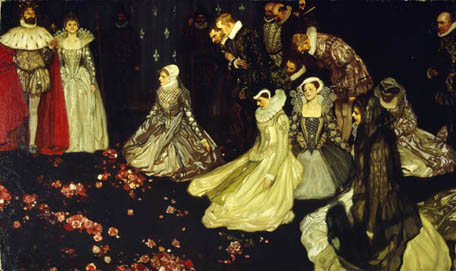
1601
- Champlain returns to France and publishes his Brief Discours.
1602
- Employed as geographer to King Henri IV.
1603
- Aymar de Chaste granted monopoly of fur trade. Funds a reconnaissance voyage to Tadoussac at mouth of St. Lawrence River. Champlain joins voyage as geographer, explorer, cartographer and observer for the king.
- Returns to France and publishes Des Sauvages, ou Voyage de Samuel de Champlain, De Brouage.
- With death of Aymar de Chaste, Pierre Du Gua, Sieur de Monts, granted monopoly of fur trade and authority to found permanent settlement.
1604-05
- Champlain travels from France to Acadia aboard Don-de-Dieu.
- Explores coasts of Acadia and Maine.
- Establishes unsuccessful settlement at Sainte-Croix Island with Sieur de Monts.
1605-07
- Successful settlement established at Port Royal, near present-day Annapolis Royal, Nova Scotia.
- Champlain explores coast of New England to Cape Cod.
- Sieur de Monts’s fur trade monopoly revoked; settlers forced to abandon Acadia and return to France.
- Sieur de Monts’s monopoly reinstated for one-year period.
1608
- Champlain completes manuscript map of New France.
- Returns to New France and establishes a colony, Quebec.
1609
- Explores River of the Iroquois (Richelieu River); names Lake Champlain.
- With Aboriginal allies, engages in battle against Mohawk near Ticonderoga, New York. Surprises Mohawks with the French gun, or arquebus.
1610
- Champlain sends Étienne Brûlé to live with Aboriginal allies to learn their languages and gather information about interior of the continent.
- King Henri IV assassinated.
- King Louis XIII crowned boy king. His mother, Marie de Medici, assumes duties as queen regent.
- Champlain and Aboriginal allies engage in battle with Mohawk near mouth of Richelieu River.
- Champlain marries Hélène Boullé in Paris.
Photo gallery
-
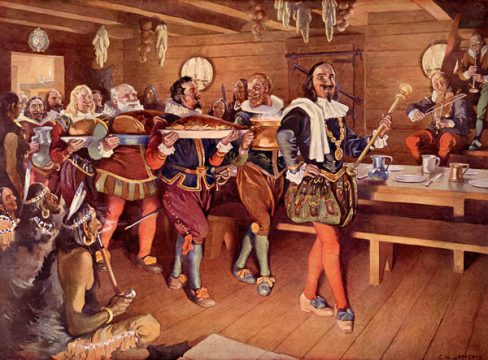
Credit: Library and Archives Canada/National Archives of Canada fonds/e002414812The Order of Good Cheer, 1606, L'Ordre de Bon Temps, C.W. Jefferys -
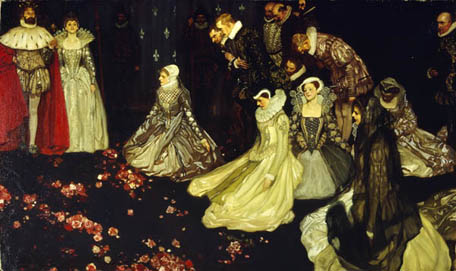
Credit: Credit: Library and Archives Canada/Frank Craig fonds/C-010619Champlain at the Court of Henry [sic] IV, Frank Craig, 1908-1911 -
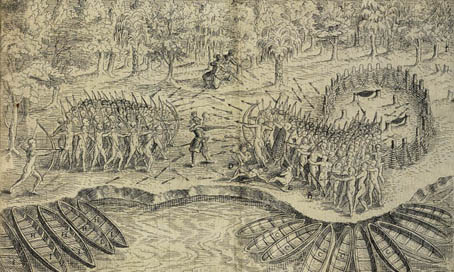
Credit: Library and Archives Canada/Les voyages du sieur de Champlain, Xaintongeois … façon, P. 232/AMICUS 4700723/nlc-000855Sketch showing Champlain in battle -
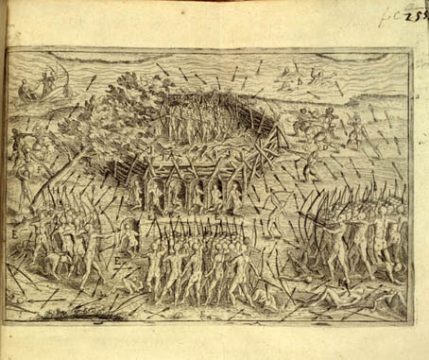
Credit: Library and Archives Canada/Les voyages du sieur de Champlain, Xaintongeois … Les voyages du sieur de Champlain, Saintongeois, P. 254/AMICUS 4700723/nlc-003356Gravure sur cuivre, “Fort des Yroquois” -
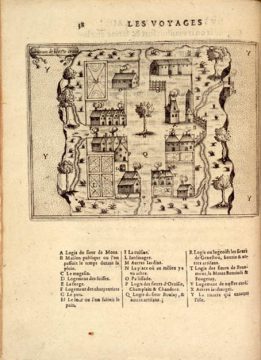
Credit: Library and Archives Canada/Les voyages du sieur de Champlain, Xaintongeois … Les voyages du sieur de Champlain, Saintongeois, P. 38/AMICUS 4700723/nlc-003351Gravure sur cuivre, “habitation de lile ste croix” -
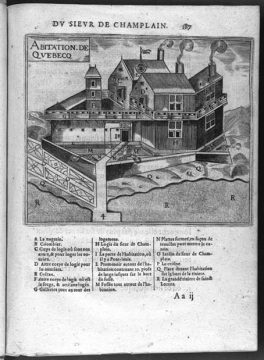
Credit: Library and Archives CanadaThe habitation at Québec, after a drawing by Samuel de Champlain, from Voyages du sieur de Champlain, 1613 -
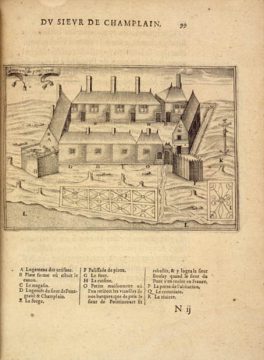
Credit: Library and Archives Canada/Les voyages du sieur de Champlain, Xaintongeois … Les voyages du sieur de Champlain, Saintongeois, P. 99/AMICUS 4700723/nlc-003352Gravure sur cuivre, “abitasion du port royal” -
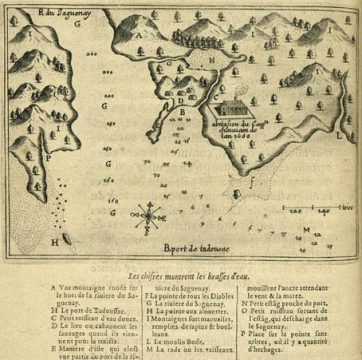
Credit: Library and Archives Canada/Les voyages du sieur de Champlain, Xaintongeois … collection/ e010764751B. port de Tadoucac [sic], 1613 -
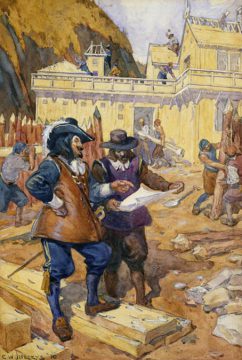
Credit: Credit: C.W. Jefferys, Library and Archives Canada/Charles William Jefferys fonds/C-073716Champlain superintending the building of his habitation, 1608 -
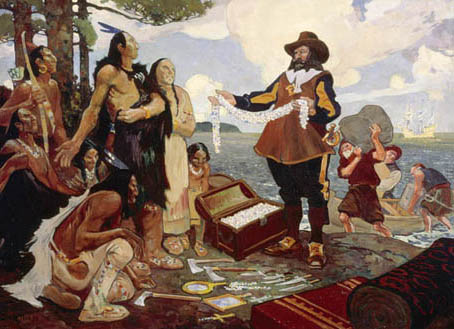
Credit: Library and Archives Canada/Charles William Jefferys fonds/C-103059Champlain Trading with the Indians, C.W. Jefferys, 1911 -
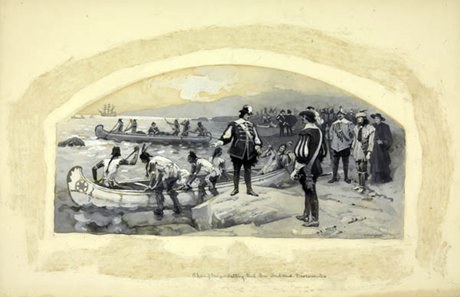
Credit: Credit: Library and Archives Canada/American Bank Note Company fonds/e008439146Champlain setting out on inland discoveries, Canada/American Bank Note Company, before July 16, 1908 -
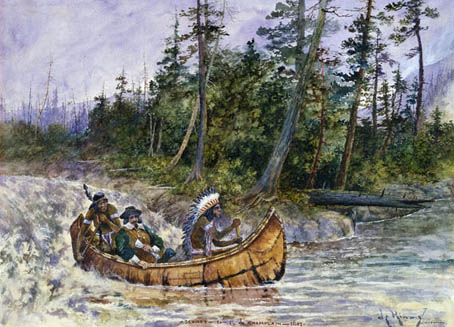
Credit: Library and Archives Canada/John Henry de Rinzy collection/C-013320Champlain in an Indian Canoe, John Henry de Rinzy, c. 1897-1930 -
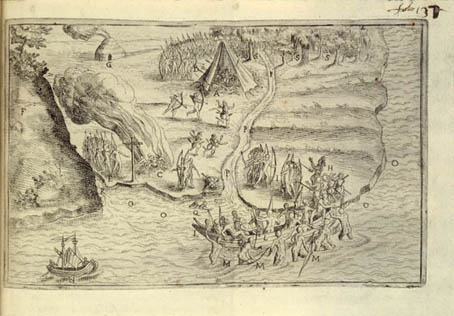
Credit: Library and Archives Canada/Les voyages du sieur de Champlain, Xaintongeois … Les voyages du sieur de Champlain, Saintongeois, P. 136/AMICUS 4700723/nlc-003353 (Port Fortuné)Gravure sur cuivre -
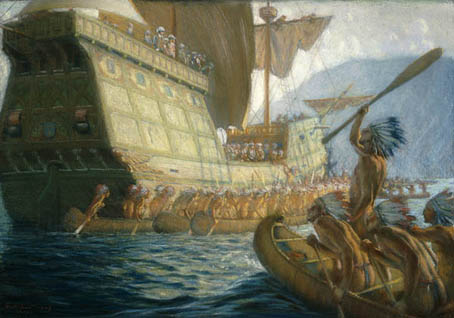
Credit: Arrival of Champlain at Québec, George Agnew Reid, 1909Arrival of Champlain at Québec, George Agnew Reid, 1909
